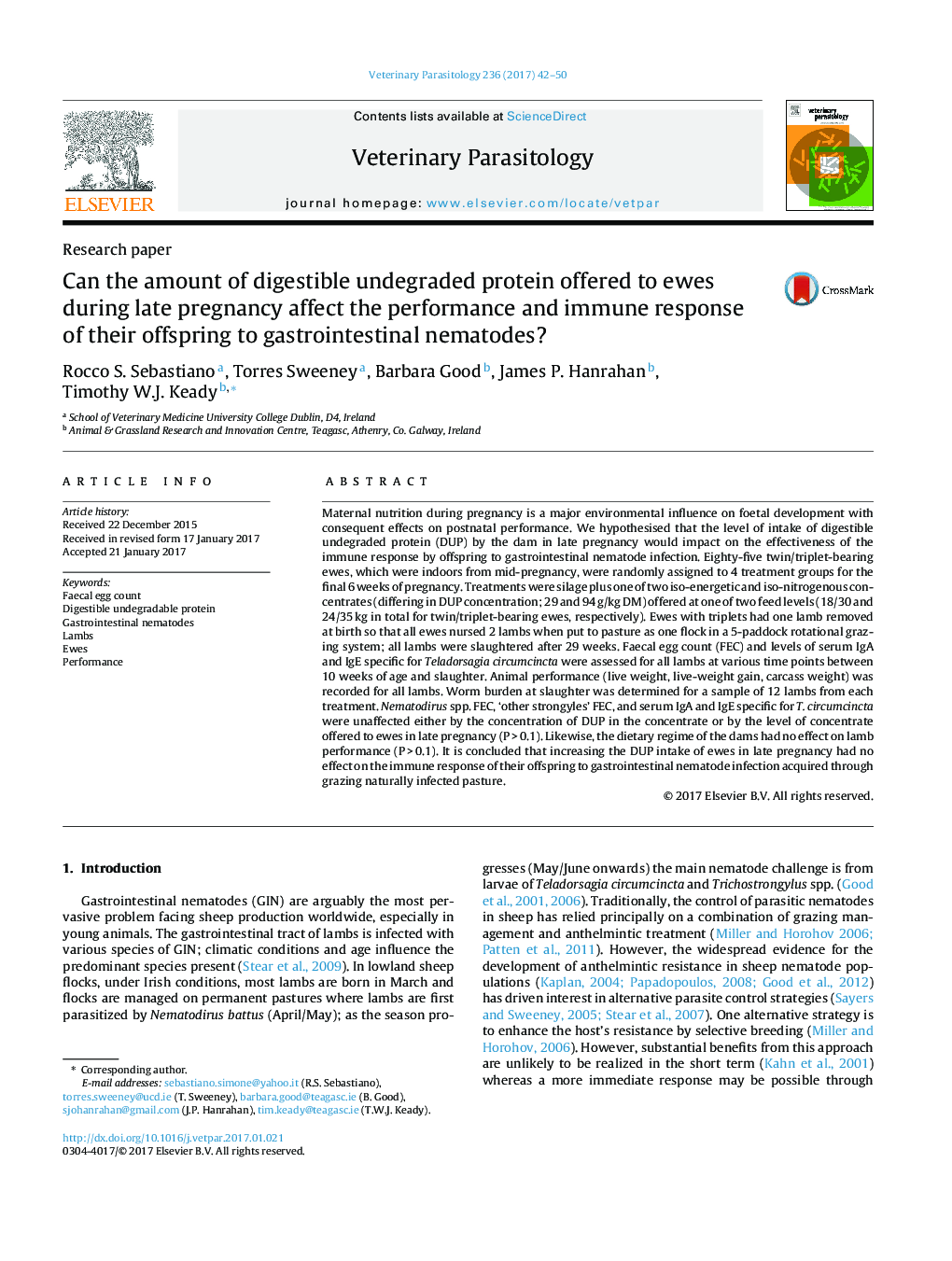| کد مقاله | کد نشریه | سال انتشار | مقاله انگلیسی | نسخه تمام متن |
|---|---|---|---|---|
| 5545827 | 1555640 | 2017 | 9 صفحه PDF | دانلود رایگان |
- Two concentrates, differing in digestible undegraded protein (DUP), were formulated.
- DUP intake in late pregnancy varied from 26 to 72Â g/d.
- MP supply as a proportion of requirement in late pregnancy varied from 0.76 to 1.2.
- Gastrointestinal nematode (GIN) infection occurred from naturally infected pasture.
- DUP intake of ewes had no effect on offspring immune response to GIN infection.
Maternal nutrition during pregnancy is a major environmental influence on foetal development with consequent effects on postnatal performance. We hypothesised that the level of intake of digestible undegraded protein (DUP) by the dam in late pregnancy would impact on the effectiveness of the immune response by offspring to gastrointestinal nematode infection. Eighty-five twin/triplet-bearing ewes, which were indoors from mid-pregnancy, were randomly assigned to 4 treatment groups for the final 6 weeks of pregnancy. Treatments were silage plus one of two iso-energetic and iso-nitrogenous concentrates (differing in DUP concentration; 29 and 94Â g/kg DM) offered at one of two feed levels (18/30 and 24/35Â kg in total for twin/triplet-bearing ewes, respectively). Ewes with triplets had one lamb removed at birth so that all ewes nursed 2 lambs when put to pasture as one flock in a 5-paddock rotational grazing system; all lambs were slaughtered after 29 weeks. Faecal egg count (FEC) and levels of serum IgA and IgE specific for Teladorsagia circumcincta were assessed for all lambs at various time points between 10 weeks of age and slaughter. Animal performance (live weight, live-weight gain, carcass weight) was recorded for all lambs. Worm burden at slaughter was determined for a sample of 12 lambs from each treatment. Nematodirus spp. FEC, 'other strongyles' FEC, and serum IgA and IgE specific for T. circumcincta were unaffected either by the concentration of DUP in the concentrate or by the level of concentrate offered to ewes in late pregnancy (PÂ >Â 0.1). Likewise, the dietary regime of the dams had no effect on lamb performance (PÂ >Â 0.1). It is concluded that increasing the DUP intake of ewes in late pregnancy had no effect on the immune response of their offspring to gastrointestinal nematode infection acquired through grazing naturally infected pasture.
Journal: Veterinary Parasitology - Volume 236, 15 March 2017, Pages 42-50
